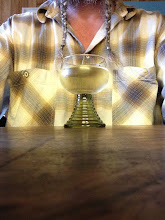To the renaissance, the significance of Vignola's essay in the delicate evocation of city and country and piety and party is amplified by the building's present status as a museum of Etruscan art. Strangely enough Julie has just bought a Vivienne Westwood impressive black cock as a piece of jewelry which is remarkably Etruscan in spirit, and certainly grabbed my poor brother's eye. Notwithstanding the delights of the villa itself, including it's wall paintings and the splendid nymphaeum, cherished within it (for garden and interior are the same thing here) is an ancient Etruscan temple. No matter it's a reconstruction, since the renaissance reconstituted the ancient world itself, even slipping it inside the Vatican Palace as Raphael's magnificent 'School of Athens' (Madge declared this was one of the most significant of pictures- remarkable in it's conjugation of the ancient and modern and the secular and religious) so this seems it's entire point. Hence the building as it is now is an even more a delicate evocation of a spirit than it might have been when it was built.
The villa sat on the edge of the city, on a rat run, a fast exit, from the Vatican, and as far as I know was used for parties in a papacy marked by sexual scandal. It seems not big enough for a residence, and more the perfect leisurely picnic site; but a picnic site equipped with nymphs and their companion, Pan. The rooms are decorated with lusty murals and it's easy to imagine such all day picnics amongst the miniature vineyards. Furthermore as an older man now I can imagine them more than I could as James's student; the old goat, with his pipe, glass of wine and twinkle in his eye.
Formally and architecturally, the villa is little more than a beautifully inhabited wall enclosing various courtyards, a 'parti' James would have seen as eminently civilised. Externally it seems unremarkable. Within the wall and nymphaeum however, there is plenty of scope for scampering about on adventures, as well as the peaceful contemplation of both nature and myth and I suspect it was as much this spirit that captured his imagination as much as anything else.
Julius III started building the villa when he was 64, and only saw a a couple of years use of it after it was completed in 1553. My brother is 63.





,_by_Luis_Ricardo_Falero.jpg)





